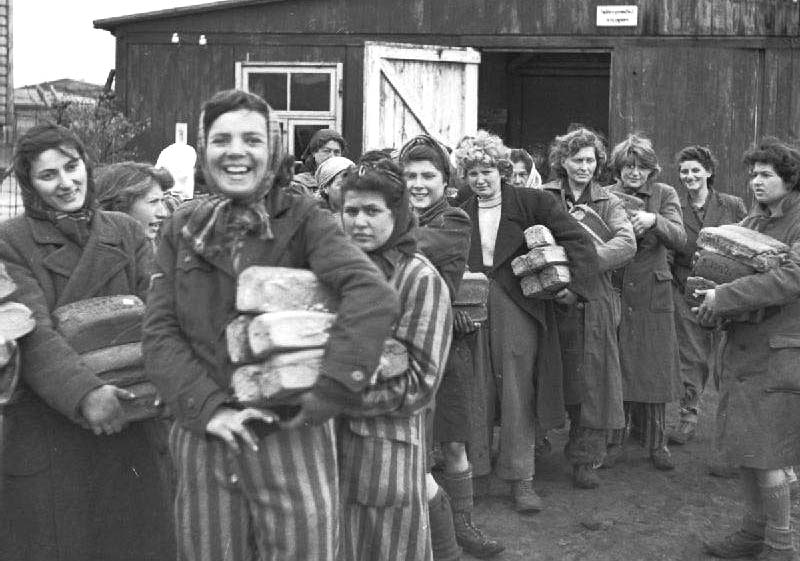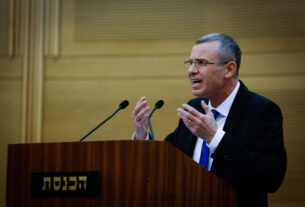Photo Credit: United Kingdom Armed Forces; Imperial War Museum

A rabbinical court’s register concerning the Bergen-Belsen concentration camp in Germany, covering the dates from May 12, 1947 to January 7, 1948, and containing about 85 court rulings permitting Holocaust survivors to remarry, will be auctioned off by the Kedem auctions company in Jerusalem, on Tuesday, December 3, at 7 PM.
Bergen-Belsen was a Nazi concentration camp in northern Germany, southwest of the town of Bergen. Originally established as a camp for prisoners of war, in 1943, parts of it became a concentration camp. Initially this was an “exchange camp,” where Jewish hostages were held with the intent of exchanging them for German prisoners of war held overseas. The camp was later expanded to accommodate Jews from other concentration camps.
<!–
Publisher #16: JewishPress.com
Zone #113: Comment Banner / (02) / News
Size #15: Banner 468×60 (Comments and Mobile) [468×60]
–> ‘); _avp.push({ tagid: article_top_ad_tagid, alias: ‘/’, type: ‘banner’, zid: ThisAdID, pid: 16, onscroll: 0 });
The camp was liberated on April 15, 1945, by the British 11th Armored Division.

The auction catalog describes the register as preliminary documentation of the extermination of European Jews during the Holocaust. In order to unleash the agunot and agunim (spouses who could not remarry because the fate of their husband or wife was not known), the rabbis needed to thoroughly investigate the manners of extermination and to carefully ascertain the chances of the victims being rescued from the various reported incidents.
The rabbis were the first to collect testimony from Holocaust survivors very close to the end of the war, while their memory was fresh and the pain still stung.
The marriage permissions in the Bergen-Belsen register before us are numbered in ascending order: 476-559. At the top of each page is the name of the person in question, followed by the collected testimony about their fate, signed by the witnesses, and then the marriage permit signed by the permitting rabbis.

The register provides jarring evidence about all the events of the Holocaust and its horrors: actions and selections; ghetto liquidation and death marches; gas chambers and crematoria; death by starvation and shooting, and so much more.
One of the testimonies relates fictitious marriages in the ghetto in an attempt to avoid being sent to the camps. Elsewhere, it records that no one survived the sick block in Auschwitz. Another testimony describes how a husband announced shortly before he was killed his name and the name of his town to a fellow inmate, indicating he had a wife and two children. Yet another testimony describes a person who died during a march and could not be buried because the prisoners had to move on.
The testimonies were given by Jews from different areas in Poland and Lithuania, including Warsaw, Krakow, Lodz, Lublin, Lviv, Bialystok, Piotrkow, Kraszanow, Elkish, and Vilna. They were sent to various camps, including Auschwitz, Treblinka, Buchenwald, Majdanek, Bergen Belsen, Stutthof, and Ravensbrück. Also mentioned are the ghettos Warsaw, Lodz, Bialystok, and more.

The register’s cover bears the signature and stamp of Rabbi Israel Aryeh Zelmanowitz and the seal of the Bergen Belsen Beit Din.
Among the rabbis on record in the register are Rabbi Yoel Halpern, Rabbi Yisrael Arie Zalmanowitz, Rabbi Issachar Berish Rubin, and Rabbi Yitzchak Glickman.
The rabbis worked with Warsaw-born Rabbi Shlomo David Kahana, who served as the Ashkenazi rabbi of the Jewish quarter of Jerusalem until it fell to the Jordanians in 1948. Rabbi Kahana was one of the main activists in seeking to release agunot and agunim after the Holocaust. He is mentioned many times in the register as having consulted with the Bergen-Belsen Beit Din about the marriage permits.
The register notebook’s 100+ pages are written over the pages of a German technical book. It is in good-to-fair condition. It has a few stains and worn out parts. There a number of tears. Its cardboard binding is worn and stained.
The opening bid is $4,000. Anticipated yield: between $6 and $10 thousand.
‘);
_avp.push({ tagid: article_top_ad_tagid, alias: ‘/’, type: ‘banner’, zid: ThisAdID, pid: 16, onscroll: 10 });



